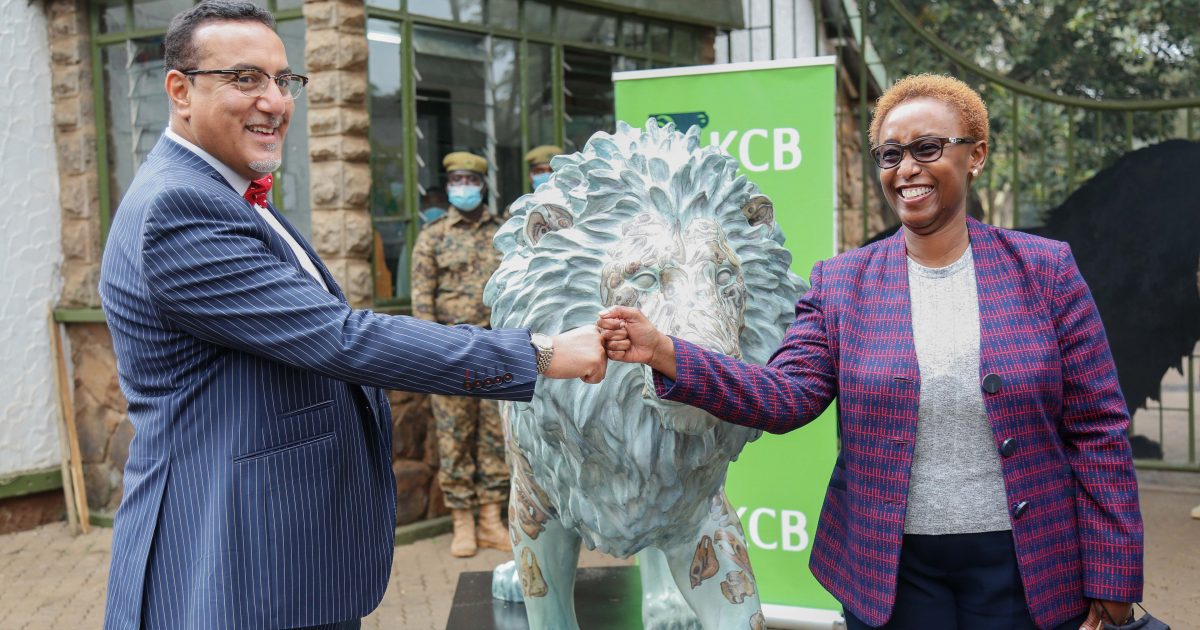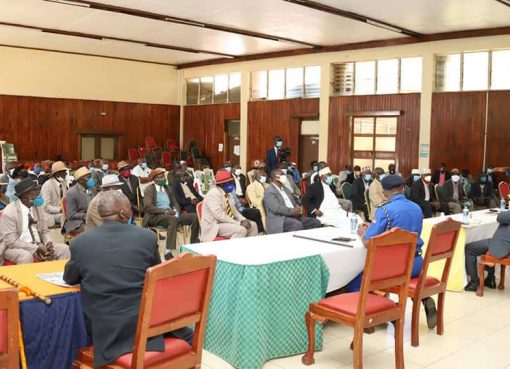The government has today launched the Tusk Lion Trail in Nairobi at the Kenya Wildlife Service (KWS) Headquarters.
The trail is a global art installation in support of African lion conservation and 47 life-sized lion sculptures have been launched onto the streets in iconic locations worldwide.

This includes Nairobi, a number of UK cities (London, Edinburgh and Bristol), The Hamptons – New York, Sydney – Australia and Wellington – New Zealand and the artworks will be on display for the public to enjoy until the end of September 2021.
Speaking when he officiated the launch, Ministry of Tourism and Wildlife Cabinet Secretary Najib Balala reiterated the importance of lions to Kenya’s biodiversity and the need to make urgent efforts for their conservation.
The DNA of Kenya’s nationhood and lions are inextricably linked and they are in our coat of arms, our currency and appear in many Kenyan company logos, the CS said noting that the lion is an iconic animal in the African culture and keystone species in wildlife conservation.
“I am proud to launch the Tusk Lion Trail today. As a country we are also very proud to be part of this initiative and to have two Kenyan artists on the lineup is an honour,” he said.
Nairobi will be home to two life-sized lion sculptures which have been designed by renowned Kenyan artists Peterson Kamwathi and Beatrice Wanjiku.
These will be stationed at the entrance of the Nairobi National Park for the month of August and the location is befitting and key biodiversity resource- which itself is home to over 30 lions.
The Park will play host to the sculptures for the next month with the aim of educating the public about the various threats facing the African lion.
Following the interactive sculpture exhibition, the unique works of art will be auctioned with proceeds going to support the work of Tusk and its partners in protecting species.
The CS noted that lion protection is one of the ministry’s key conservation priorities as they form a crucial part of Kenya’s biodiversity and natural ecosystems.
This event, Balala added will help not only to raise awareness for lions’ plight but also to shine the spotlight on the many more successes that need to scaled up to ensure their future sustainability.
“Mutual efforts and partnerships like the one we see here today – corporate, cultural and government – are critical to the protection of the lion populations that remain,” the CS said.
The population of African lions is estimated to have declined by as much as 50 per cent over the last 25 years.
Each sculpture on the lion trail, according to the CS will highlight the magnificence of lions, threats to their existence and the people and solutions working for their survival, raising awareness for conservation efforts across the world.
“There is a real threat to the species’ survival from loss of habitat, persecution from human conflict and growing illegal trade in lion parts,” Balala noted.
Tusk, an African conservation charity, has teamed up with Kenyan telecommunications giant Safaricom PLC and banking industry pioneer KCB Bank Kenya, to bring attention to the plight of lion conservation in Africa.
“We are leading the charge though investing in environmental sustainability to ensure a future for nature,” KCB Head of Corporate Affairs Judith Sidi Odhiambo said.
She added that the collective and active participation in the conservation of wildlife is critical for the survival of many endangered species and can serve as an important economic, social, and security engine for communities and individuals if sustainable development has to be achieved.
Kris Senanu, Safaricom’s Chief Enterprise Business Officer saluted all the artists involved in the noble initiative not only for their talents but for going above and beyond by choosing to use their gifts to raise awareness about the threats facing the African lion.
“Safaricom remains committed to working with partners like Tusk and KCB to continue supporting and highlighting both environmental and wildlife conservation projects,” said Senanu.
Speaking at the launch, KWS Director General Brigadier (Rtd.) John Waweru said that Lions are one of the flagship species of Kenya for conservation and tourism as they occur in a number of Kenya’s protected areas, with large populations in the Maasai Mara and the Tsavo ecosystem.
“In addition, there are important lion populations outside protected areas in Laikipia and Kajiado,” Brig. Waweru said
The Cabinet Secretary was joined by the Principal Secretary for Tourism Professor Fred Segor, Director and other Tusk representatives.
DHL is the global lead partner for the Tusk Lion Trail, which is co-sponsored by ISPS Handa.
By Wangari Ndirangu





